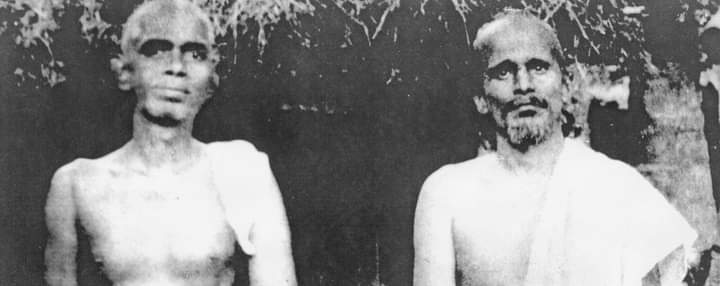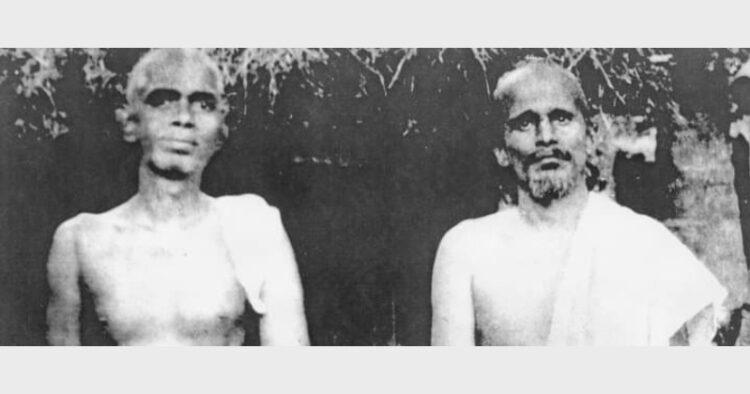
Our main influence since 1970 has been the teachings of Bhagavan Ramana Maharshi and the tradition of Advaita Vedanta that he was connected to going back to Adi Shankara and the Upanishads long before him. We visited the ashram many times over the years, wrote a number of articles for their Mountain Path publication, and spoke before their centers in India and the West, studying and practicing Bhagavan’s teachings in various ways, including experiencing an ongoing inner contact with him.
Yet our connection with Ramana developed another special dimension. We came into contact with the teachings of Kavyakantha Ganapati Muni (1878-1936), perhaps the chief disciple of Ramana, through K. Natesan, one of his oldest living disciples. Ganapati was probably the greatest Sanskrit writer of modern India and a Raja Yogi of the highest order, for whom all the secrets of Kundalini and the chakras, as well as the depths of Advaita, were on the tip of his tongue expressed through his mantric powers.
Natesan (1912-2009) had been with Ramana since the age of 12 and with Ganapati since the age of 18, with regular contact with both. He received a special mission to preserve through Ramana and Ganapati to carry on Ganapati’s works, from his Sanskrit renderings of Ramana’s teachings to his vast studies that included Yoga, Vedanta, Ayurveda and Jyotish, revealing the secrets of the Vedas along with Shakti Sadhana and a new vision of India and humanity.
Since first meeting Natesan in 1991 to the time of his passing in 2009, I shared these teachings and took them up, as they resonated with my own ongoing sadhana and teachings that already included Yoga, Vedanta, Ayurveda, Jyotish and Vedas, with views similar to Ganapati. Ganapati’s connection with Ramana and Advaita but also the Vedic mantric traditions overall, including Yoga, Ayurveda and Jyotish, has marked our work and the integral nature of the teachings.













Comments